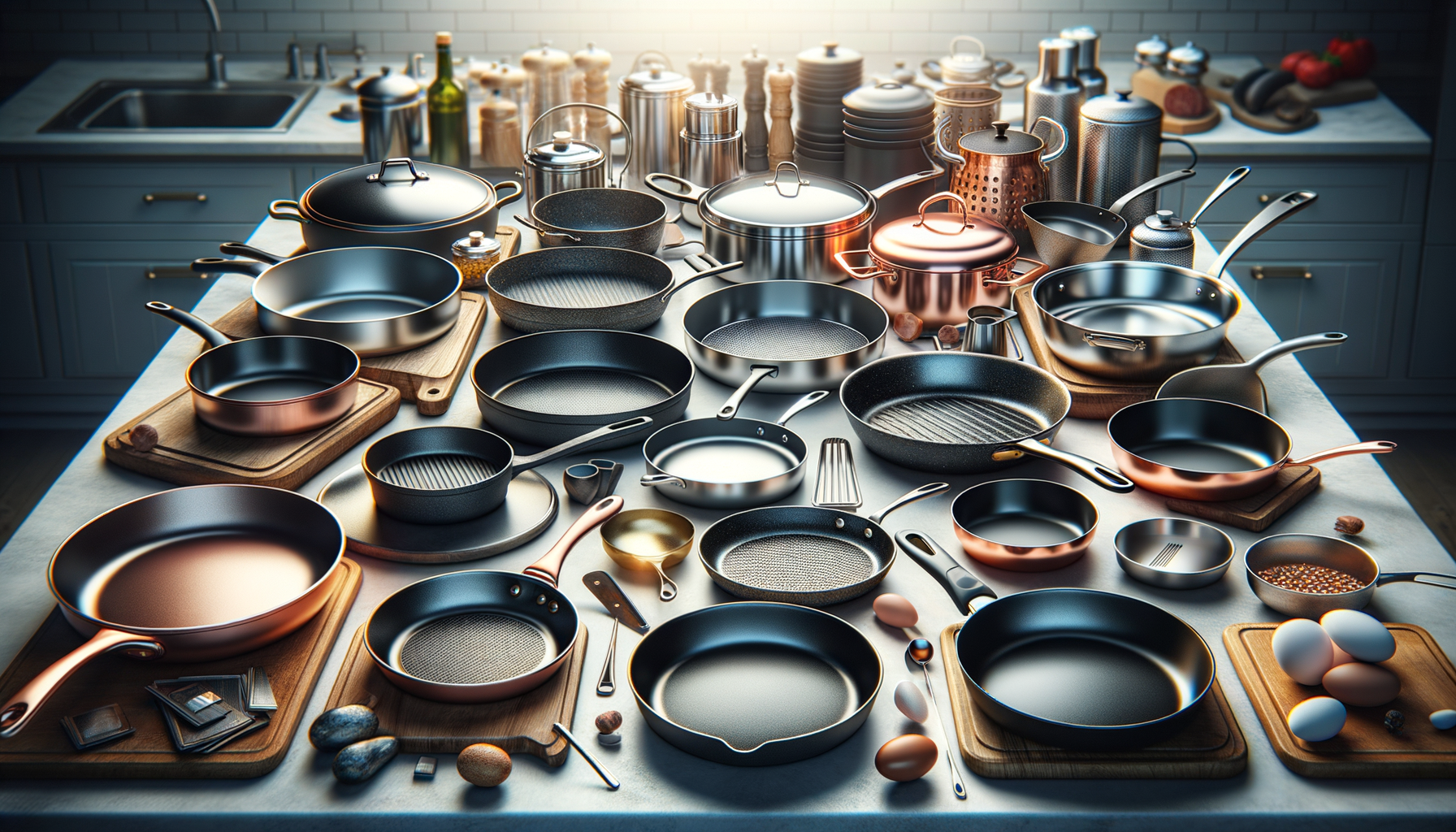The Versatility of Frying Pans
Frying pans, often referred to as skillets, are indispensable in kitchens worldwide. Their versatility allows them to handle a range of cooking tasks from searing meats to sautéing vegetables. The design typically features a flat bottom with slightly flared sides, perfect for tossing ingredients or ensuring even heat distribution. This section explores the different materials and types of frying pans, helping you select the right one for your culinary needs.
Frying pans come in various materials, each offering distinct advantages. Stainless steel pans are renowned for their durability and resistance to rust, making them a staple in professional kitchens. They are ideal for browning and deglazing, thanks to their ability to withstand high temperatures. On the other hand, cast iron pans are celebrated for their heat retention and even cooking, making them perfect for slow-cooked dishes. Their non-stick properties improve with use, as the surface becomes seasoned over time.
Non-stick pans, often coated with Teflon or ceramic, provide an easy cooking experience with minimal oil, making them suitable for health-conscious cooks. However, they require careful handling to avoid damaging the coating. Copper pans, though less common, offer rapid and uniform heat conduction, making them a favorite for precise cooking tasks. Each material has its unique benefits, so understanding your cooking style and needs is crucial in choosing the right frying pan.
Choosing the Right Size and Shape
When selecting a frying pan, size and shape are important considerations. The diameter of the pan affects how much food you can cook at once. Smaller pans, around 8 inches, are ideal for individual meals or small portions, while larger pans, 12 inches or more, can accommodate family-sized dishes. It’s essential to match the pan size to your stove burner for optimal heat distribution.
The shape of the frying pan also plays a role in its functionality. Flared sides make it easier to toss food or slide it out of the pan, while straight sides are better for dishes that require more liquid, like sauces or shallow frying. Some pans come with a helper handle, providing extra support when lifting heavy dishes.
Consider the depth of the pan as well. Deeper pans offer more versatility, allowing you to cook a wider range of dishes, from frying to braising. However, they might not be as effective for quick searing or browning. Ultimately, the right size and shape depend on your cooking habits and the types of dishes you frequently prepare.
Maintenance and Care Tips
Proper maintenance and care are crucial for prolonging the life of your frying pan. Different materials require specific cleaning methods to preserve their quality. For stainless steel pans, it’s advisable to avoid abrasive cleaners that can scratch the surface. Instead, use a mixture of baking soda and water to remove stubborn stains.
Cast iron pans require seasoning to maintain their non-stick properties. After each use, clean the pan with warm water and a soft brush, then dry it thoroughly. Apply a thin layer of oil to the surface to prevent rusting. Avoid using soap, as it can strip the seasoning.
Non-stick pans should be cleaned with a soft sponge and mild detergent to prevent damaging the coating. Avoid metal utensils, which can scratch the surface. For copper pans, use a specialized copper cleaner to maintain their shine. Regular maintenance not only extends the lifespan of your frying pan but also ensures optimal cooking performance.
Health Considerations and Safety
When using frying pans, it’s essential to consider health and safety aspects. Non-stick pans, while convenient, have raised concerns due to the chemicals used in their coatings. It’s important to avoid overheating these pans, as they can release harmful fumes at high temperatures. Opt for ceramic-coated non-stick pans as a safer alternative.
Cast iron pans, known for their durability, can add a small amount of iron to your diet, which can be beneficial. However, individuals with iron overload conditions should use them cautiously. Stainless steel and copper pans are generally safe, but it’s important to ensure they are well-maintained to prevent any leaching of metals into food.
Safety also involves using the right utensils. Wooden or silicone utensils are recommended for non-stick pans to prevent scratching. Always use oven mitts or pot holders when handling hot pans, and ensure that the pan’s handle is securely attached to avoid accidents. By considering these factors, you can enjoy safe and healthy cooking with your frying pan.
Environmental Impact and Sustainability
The environmental impact of frying pans is an important consideration for eco-conscious consumers. The production and disposal of cookware can contribute to environmental degradation. Opting for pans made from sustainable materials or those with eco-friendly certifications can help reduce your carbon footprint.
Cast iron pans are a sustainable choice due to their longevity and recyclability. They can last a lifetime with proper care, reducing the need for frequent replacements. Stainless steel pans, while durable, can be energy-intensive to produce. However, they are recyclable, which offsets some of the environmental impact.
Non-stick pans, particularly those with PTFE coatings, pose environmental challenges due to the chemicals involved in their production. Choosing ceramic-coated alternatives can mitigate these concerns. Additionally, supporting brands that prioritize sustainable practices, such as using recycled materials or reducing packaging waste, can contribute to a more eco-friendly kitchen.



Leave a Reply